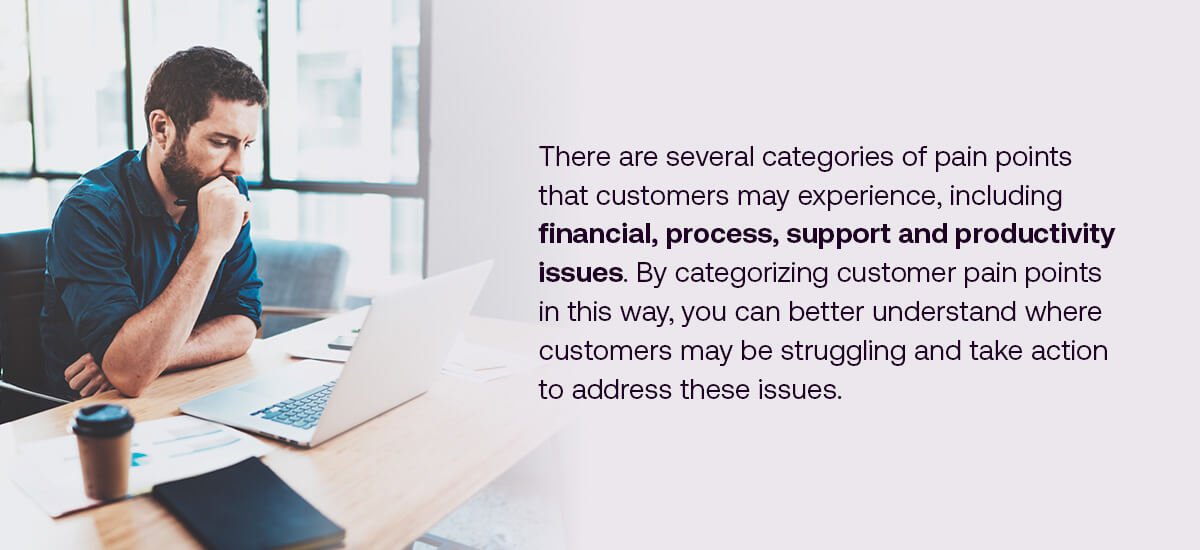Contents
Categories

Identify consumer shopping struggles through surveys
As a business owner, one of your main objectives is to provide your customers with the best experience, and part of that is identifying their pain points. But how do you know what they’re struggling with when shopping? The answer is simple — surveys. With the help of customer experience research via surveys, you can locate and address pain points, in turn creating a better experience. This article will provide you with valuable insights into how to gather feedback from your customers and improve your operations as a result.
How to identify when customers are struggling
Understanding customer pain points can help you create a more enjoyable shopping experience and build a loyal customer base. But what are pain points, and how do you identify them? The term “pain point” refers to specific problems or difficulties that customers experience when shopping. These can be anything from confusing website navigation to long checkout wait times. By identifying your business’s pain points regarding the customer experience, you can make targeted improvements to your business to create a more seamless experience for your customers. There are two primary methods for identifying pain points — conducting customer research and conducting sales research.
Conducting customer research
One of the most effective ways to identify pain points in sales is by conducting customer research. Using surveys can provide valuable insights into your customers’ experiences, preferences and pain points. By analyzing their feedback, you can gain a better understanding of what’s working and what’s not and make changes to improve their experiences with your business. When conducting customer research, it’s essential to ask open-ended questions that allow customers to provide detailed feedback. For example, you could ask questions like “What was the most frustrating part of your shopping experience?” or “What could we do to improve our service?” These questions can generate feedback that can help you pinpoint specific pain points and take action to address them. It’s also important to analyze customer feedback across multiple channels, including social media, review sites and customer service interactions. By looking at feedback from various sources, you can get a more comprehensive understanding of your customers’ experiences and identify trends and patterns.
Conducting sales research
Another valuable way to identify when customers are struggling is by conducting sales research. Your sales team is a valuable source of information about how customers feel about the sales process. One way to conduct sales research is to hold regular meetings with your sales team to discuss customer feedback. Ask them to share any recurring issues or complaints they’ve heard from customers. By analyzing this feedback, you can identify trends and patterns and take action to address them. Another approach to sales research is to analyze sales data. Look for trends in customer behavior, such as abandoned shopping carts, low conversion rates or high return rates. This data can help you identify areas where customers may be struggling and make improvements to your sales process.

Different types of customer pain points
There are several categories of pain points that customers may experience, including financial, process, support and productivity issues. By categorizing customer pain points in this way, you can better understand where customers may be struggling and take action to address these issues.
Financial
Financial pain points are one of the most common types of issues that customers experience. Customers want to feel like they’re getting good value for their money, and any unexpected or hidden costs can be a significant source of frustration. Some examples of financial pain points that customers may experience include the following:
- High prices: If your prices are notably higher than your competitors’ prices, customers may choose to take their business elsewhere.
- Unexpected fees: Unexpected fees, like shipping or handling charges, may not be immediately apparent to customers when browsing your website. However, they can add up quickly upon checkout and lead to abandoned carts.
- Lack of pricing transparency: If customers feel like they’re being misled into paying more than expected, they’re likely to lose trust in your brand. Providing clear, upfront information about pricing can help alleviate financial pain points and build customer loyalty.
Process
Process pain points refer to issues customers encounter during the buying process itself. Any part of the buying process that feels difficult or frustrating for the customer can be considered a process pain point. One common process pain point is a confusing or difficult-to-navigate website. If customers need help finding what they’re looking for quickly or have trouble completing a purchase online, they may give up and take their business elsewhere. Long wait times to speak with a customer service representative can also be a source of frustration. Customers want to feel like you respect their time, and if they have to wait on hold for too long, they may feel like you don’t prioritize their needs.
Support
Support pain points refer to any issues customers encounter when seeking help or support from a company. These issues can include difficulty reaching customer service representatives, unhelpful responses and long wait times for a resolution. When customers have a problem or question, they want help quickly and easily. If they have trouble getting through to customer service or encounter unhelpful responses, they may become frustrated and feel like you’re not meeting their needs. It’s crucial to make it as easy as possible for customers to get the help they need. Some resolutions might include offering multiple channels for support, such as phone, email and chat, and ensuring customer service representatives are well-trained and equipped to handle a wide range of issues.
Productivity
Productivity pain points for customers often relate to the time and effort required to complete a task or achieve a goal. For example, if a customer is spending too much time on a website searching for a product or navigating a complex checkout process, it can lead to frustration. Additionally, if a product or service performs differently than expected or requires frequent maintenance, the customer will likely feel dissatisfied. By identifying all of the above pain points through well-designed customer surveys, businesses can improve their processes and offerings to meet the needs of their customers better and ultimately increase customer satisfaction.

Learn more about your customers with Cint
Taking the time to understand your customers’ pain points means you can create a better shopping experience that keeps them coming back. Remember, the key to success is listening to your customers and taking action based on their feedback. With a little bit of effort, you can turn your customers’ pain points into opportunities for growth and success. Cint provides marketing research tools that allow businesses of all sizes to collect valuable data. Our survey sampling solution connects businesses with their target audiences, allowing them to collect survey data efficiently and precisely. Contact us today for more information about our solutions.




































































































